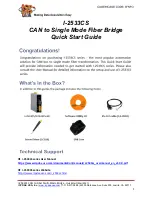
Pr
o
Minent
®
Page 39
Ozone
8.2.2.4
DULCOTEST
®
OZE Ozone Sensor, Calibration
After expiry of the running-in period, the sensor can be calibrated.
IMPORTANT
• A slope calibration must be carried out after having replaced a diaphragm cap or
electrolyte!
• For a perfect functioning of the sensor, the slope calibration must be repeated in regular
intervals! For swimming pools, a calibration of the sensor every 3-4 weeks is suffi cient.
• Avoid incorrect metering because of airlocks in the sample water! Air bubbles sticking
to the diaphragm of the sensor might cause a low measuring value and thus might
result in incorrect metering.
• Observe the valid national regulations for calibration intervals!
Preconditions
• Constant
fl ow at the in-line probe
• Operating pressure of max. 1 bar maintained
• Constant temperature of the sample water
• Identical temperatures of sample water and sensor (wait for approx. 15 min.)
• Constant pH value
Zero Point Calibration
If the sensor is operated at a ProMinent control unit, a zero point calibration is normally not
required. Perform a zero point calibration if you use the sensor at the lower measuring range limit.
Preconditions
• The sensor has been run-in
•
Constant
fl ow at the in-line probe
Dip the sensor in a bucket with clean, ozone-free tap water.
Stir with the sensor until the reading at the control unit has been stable for 5 min.
Calibrate the control unit to zero according to its operating instructions.
Reinstall the sensor into the in-line probe (DGM; DLG).
Slope
Test
Determine the ozone content of the sample water using a suitable measuring tool (e.g. DPD 4).
Set the determined value at the control unit according to the unit’s operating instructions.
Repeat the calibration the next day!
NOTE
Calibration at increased temperature
Because ozone is only physically solved in water, it quickly outgasses from the medium at
increased temperatures (> 30 °C). The DPD measurement must thus be performed quickly.
After sample-taking, the reagents should be added within 1 minute. In this case, the red
dye is to be directly generated at the sampling site by adding reagents and then the
measurement is to be performed in the laboratory as quickly as possible.
BA_DR_002_02_09_GB_Cooling.indd 39
BA_DR_002_02_09_GB_Cooling.indd 39
24.02.2009 11:56:05 Uhr
24.02.2009 11:56:05 Uhr
















































